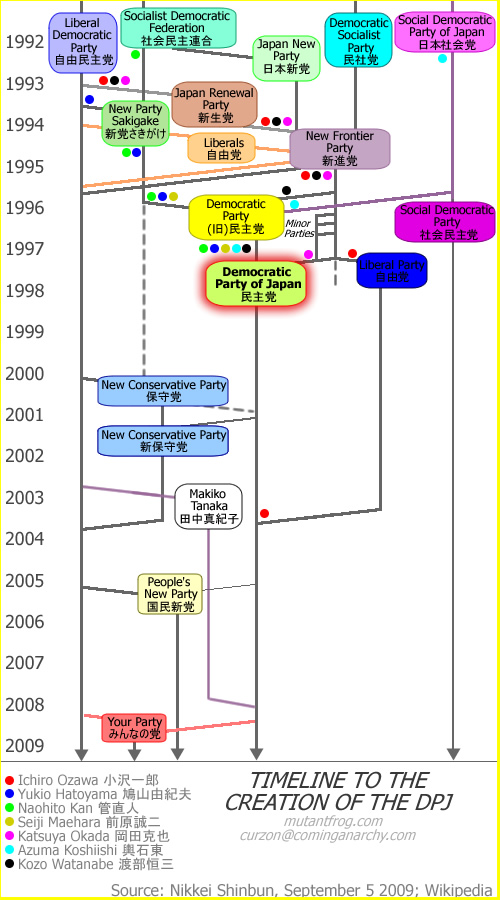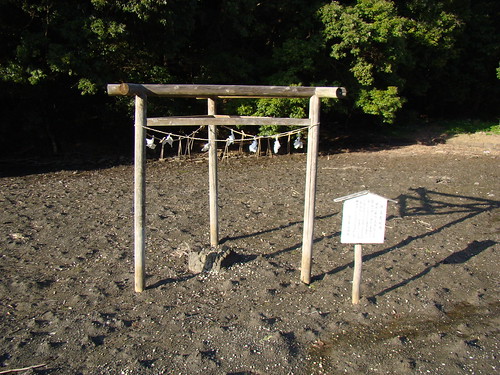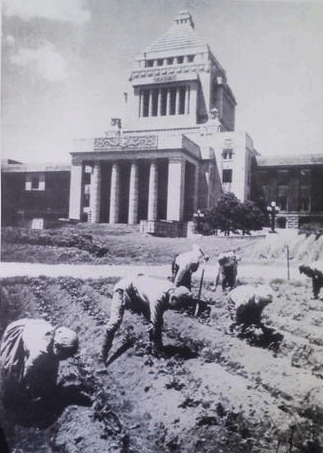For folks trying to find an affordable apartment near a major Japanese city, one useful resource is the Urban Renaissance Agency (都市再生機構 toshi saisei kikou), usually called “UR” in Japanese.
UR has a vast portfolio of properties. Although the agency is associated with danchi, the intimidatingly enormous apartment complexes scattered around the suburbs of Japanese cities, they also offer upscale center-city properties, such as the high-rise apartments on the south side of Shiodome in Tokyo (within spitting distance of Shinbashi and Ginza).
There are several advantages to renting through UR. Unlike many private landlords, UR does not charge for “key money,” only imposing a (theoretically) refundable 3-month security deposit at the start of the lease. There are also no brokerage fees, and no additional fees to renew the lease upon its expiration.
Perhaps most saliently for the readers of this blog, UR also has few barriers to entry. Anyone with a certain level of income or assets can generally rent a UR apartment, and even the less financially well-off can get into UR by prepaying their lease. UR does not discriminate against foreigners, against unmarried couples, against same-sex roommates or against part-time renters, despite the fact that private landlords routinely shun all four groups for unclear reasons.
How UR came to be
UR is a government-mandated developer established in 2004, and claims to be “probably the largest landload [sic] and developer in the world.” It functions like a private company with an enormous balance sheet, but remains under the supervision of the Land, Infrastructure and Transport Ministry, like its many forebears.
The first forebear of UR was the Japan Housing Corporation (日本住宅公団), established in 1955 to build housing for workers in major cities during the post-Korean War economic boom. JHC built many of the classic danchi around Tokyo and Osaka, starting with Kanaoka (Sakai) and Inage (Chiba). In the sixties and seventies it became more deeply involved in mixed-use “new town” projects in the suburbs, incorporating apartment buildings, single-family homes and commercial properties. Another state-owned Residential Land Development Corporation (宅地開発公団) was set up in 1975 and is chiefly remembered today for its work on the Chiba New Town project (the Hokuso Line in Chiba was once called the “Corporation Line” or 公団線 since the Corporation owned everything around it).
These two entities merged into a single Housing and Urban Development Corporation (住宅・都市整備公団) in 1981, which was renamed to Urban Development Corporation (都市基盤整備公団) in 1999. During this era, the corporation shifted from crowded apartment complexes and suburbs to more spacious and comfortable projects, as the postwar urban population explosion began to slow down and wealthier consumers started to demand more than a few tatami mats surrounded by reinforced concrete.
UR’s other family line starts with the Coal Mining Area Development Corporation (産炭地域振興事業団), founded in 1962. This entity was set up to encourage business development in hard-hit coal-mining regions and to support the re-training of former coal miners. In 1972, the entity’s mandate broadened, and it became the Industrial Relocation and Coal Mining Area Development Corporation (工業再配置・産炭地域振興公団) for two short years, before the Diet settled on a less unwieldy name, Japan Regional Development Corporation (地域振興整備公団), in 1974. For the next thirty years, JRDC worked on various projects to spur industrial and economic development in the nether regions of Japan, focusing on isolated prefectures like Akita, Aomori and Miyazaki.
UR was formed when JRDC was broken up in 2004. The urban planning operations of JRDC were folded into UDC to form UR, while the industrial development operations of JRDC became part of a new (and very awkwardly-named) Organization for Small & Medium Enterprises and Regional Innovation (中小企業基盤整備機構).
The agency is now governed by a special statute which defines its purpose in one enormous run-on sentence:
…to plan the renewal of major cities and regional urban centers where foundational arrangements for effective urban activity and rich urban living have not been adequately conducted in response to changes in social and economic conditions, by conducting services related to improving the arrangement of urban districts and assisting in the provision of rental housing, through increasing urban functions and improving the residential environment in response to changes in social and economic conditions, and by conducting services related to the management of residential housing inherited from the Urban Development Corporation, to plan the sustainable preservation of rental housing which has established a desirable residential environment, thereby contributing to the sound development of cities and the greater sustainability of citizens’ lifestyles.
How UR works
Some UR developments are essentially intended to monetize government land. The Shiodome apartment buildings, for instance, are on the site of what was Tokyo’s main rail freight terminal during the days of nationalized rail. The huge Hikarigaoka development (at the end of the Toei Oedo Line in Tokyo) was redeveloped from Grant Heights, a US military housing complex returned to Japan in the 1970s (itself built atop an Imperial Army air field).
Other developments such as Chiba New Town, the Tsukuba Science City, the Saitama New Urban Center and the Kansai Science City are built on land purchased from private owners, no differently than a private real estate developer might operate.
Besides its government equity fund of 948 billion yen, UR also issues special Urban Renaissance Bonds (都市再生債券), currently totaling about 1.8 trillion yen. But its main source of funding is the Ministry of Finance, which has pumped ten trillion yen of loans into UR through its Fiscal Investment and Loan Program. Another two trillion or so comes from debt investment by domestic banks and life insurance companies.
Aside from being a developer, UR is also a policy arm of the Japanese government, and of MLIT in particular. The government regularly passes down policy statements to UR. This February, for instance, MLIT made the following pronouncement (I’ll spare you a word-for-word translation this time because the original badly needs editing):
Looking at the state of cities in our nation amidst globalization and a developing information age, the largest cities are losing allure and international competitiveness as they stand shoulder-to-shoulder with cities overseas, while they continue to be troubled by the expectation of severe damage in crowded urban areas in the event of a disaster.
Regional urban centers are losing their urban functions as city halls and other public facilities move to suburban locations along with major commercial facilities, as city centers become vacant and as industrial production weakens in outlying regions. The state of these regional urban centers reflects not only a decline in urban functions of the cities themselves, but of their entire surrounding regions.
Cities are the source of our national dynamic. In response to major socioeconomic shifts–the information age, globalization, declining birth rates, aging, depopulation and environmental problems–it is necessary to increase the competitiveness of cities, and to increase their allure using the history and culture of each city, by constructing “compact cities,” beautiful cities where one can safely live in a relaxed environment, and by constructing a society where sustainable development is possible.
This all sounds like fluff so far, but the next few paragraphs start indicating otherwise:
Such urban development demands drawing upon and deploying capital, know-how and other civilian power in these cities to arouse new demand. However, it is difficult to plan improved development through governments and private businesses alone because (among other issues) the legal relations between these parties are complex and difficult to coordinate.
Taking this situation into account, in order to advance the development of new 21st-century urban centers, UR will take a leading role in urban development, spur private investment in cities and contribute to the revitalization of the economy…
Moreover, in the global economic downturn spurred by the subprime loan crisis, our nation’s economy is in a deeply troubled state of falling stock prices, less available capital for businesses and ongoing labor restructuring. As private businesses become less interested to invest in urban development, UR shall strengthen its efforts to spur private demand, and while supplementing private urban development, shall make efforts to plan a shift toward a more domestic demand-led economy.


 Like many Westminster-style political systems, Japan employs a system where the Cabinet has the power to dissolve the lower house of the legislature prior to the expiration of said house’s full term. Once the House is dissolved, an election is held, new legislators take office and another four-year term begins.
Like many Westminster-style political systems, Japan employs a system where the Cabinet has the power to dissolve the lower house of the legislature prior to the expiration of said house’s full term. Once the House is dissolved, an election is held, new legislators take office and another four-year term begins.


